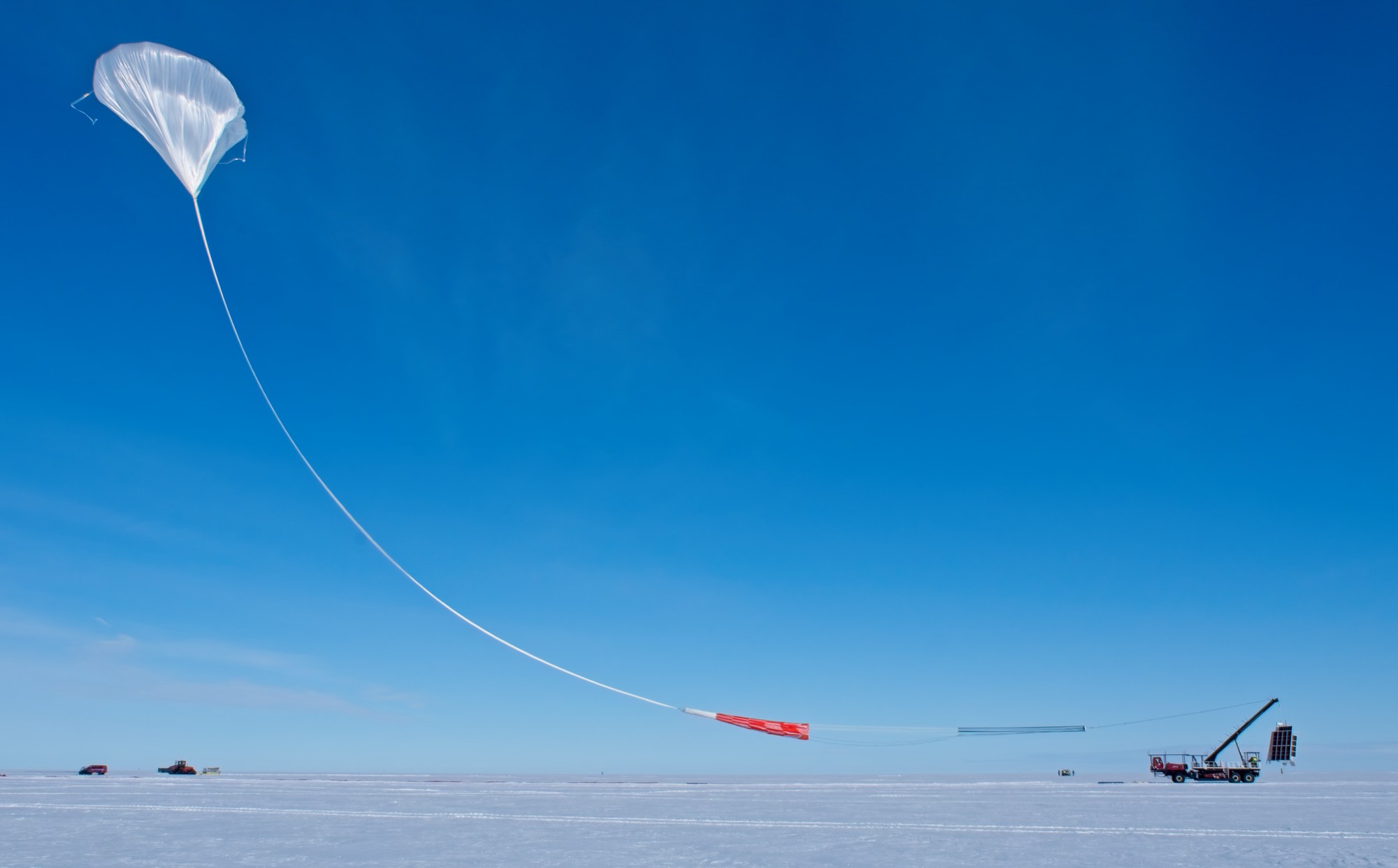
Editor’s note: The GUSTO mission ended Feb. 26 at 6:24 p.m. EST, setting a new record for a NASA heavy-lift, long-duration balloon flight at float for 57 days, 7 hours, 38 minutes. The payload descended by parachute landing safely on the ground in Antarctica. Any recovery effort, while not required for mission success, will be coordinated through the U.S. National Science Foundation, including support from other Antarctic programs.
Editor’s note: This story was updated to state that the U.S. National Science Foundation’s Office of Polar Programs oversees the U.S. Antarctic Program.
Fifty-five days, one hour, and 34 minutes was the NASA record to beat, and the GUSTO (Galactic/Extragalactic ULDB Spectroscopic Terahertz Observatory) scientific balloon mission did just that Saturday, Feb. 24, while flying high above the icy surface of Antarctica. GUSTO is now the new record-holder for longest flight of any NASA heavy-lift, long-duration scientific balloon mission.
“The success of this balloon mission is a fantastic tribute to all the people that support the program,” said Andrew Hamilton, acting chief of NASA’s Balloon Program Office at the agency’s Wallops Flight Facility in Virginia. “From the operations team at Peraton, to our balloon manufacturer at Aerostar, to the U.S. National Science Foundation and their support staff in Antarctica, and to the Mission Management team with NASA, every one of them has been vital to the success of this mission which absolutely demonstrates the capability and value of Long Duration Ballooning to the scientific community.”
GUSTO was launched at 1:30 a.m. EST Dec. 31 from the Long Duration Balloon Camp near the U.S. National Science Foundation’s McMurdo Station in Antarctica. The balloon mission not only broke the flight record but continues its path circumnavigating the South Pole. The stadium-sized zero-pressure scientific balloon and observatory are currently reaching altitudes above 125,000 feet. “The health of the balloon and the stratospheric winds are both contributing to the success of the mission so far,” said Hamilton. “The balloon and balloon systems have been performing beautifully, and we’re seeing no degradation in the performance of the balloon. The winds in the stratosphere have been very favorable and have provided stable conditions for extended flight.”
GUSTO’s record-breaking flight claimed the NASA title from the Super-TIGER (Super Trans-Iron Galactic Element Recorder) balloon mission, which launched from Antarctica in December 2012.
GUSTO, an Astrophysics mission managed by NASA’s Explorers Program Office at the agency’s Goddard Space Flight Center in Greenbelt, Maryland, is led by principal investigator Christopher Walker from the University of Arizona with support from the Johns Hopkins University Applied Physics Laboratory.
“NASA’s Long Duration Balloon program provides researchers the ability to fly state-of-the art payloads at the very edge of space, affording them the opportunity to make groundbreaking observations of the cosmos more frequently and at a significantly lower cost than conventional orbital missions,” said Walker.
GUSTO is mapping a large part of the Milky Way galaxy, including the galactic center, and the nearby Large Magellanic Cloud. The telescope is equipped with sensitive detectors for carbon, oxygen, and nitrogen emission lines. Measuring these emission lines gives the GUSTO team insight into the full lifecycle of the interstellar medium, the cosmic material found between stars. GUSTO’s science observations are performed from Antarctica to allow for enough observation time aloft, access to astronomical objects, and solar power provided by the austral summer in the polar region.
The GUSTO science mission is scheduled to run just over 60 days, and even after the science mission is complete, the balloon will continue to fly and perform technology demonstration work. “After that, we plan to push the limits of the balloon and fly as long as the balloon is capable to really demonstrate the capabilities of Long Duration Ballooning,” said Hamilton.
NASA’s Wallops Flight Facility in Virginia manages the agency’s scientific balloon flight program with 10 to 15 flights each year from launch sites worldwide. Peraton, which operates NASA’s Columbia Scientific Balloon Facility (CSBF) in Texas, provides mission planning, engineering services, and field operations for NASA’s scientific balloon program. The CSBF team has launched more than 1,700 scientific balloons over some 40 years of operations. NASA’s balloons are fabricated by Aerostar. The NASA Scientific Balloon Program is funded by the NASA Headquarters Science Mission Directorate Astrophysics Division. NASA balloon launch operations from Antarctica receive logistical support from the U.S. National Science Foundation’s Office of Polar Programs, which oversees the U.S. Antarctic Program.
For more information on NASA’s Scientific Balloon Program, click here. Track the GUSTO mission in real-time on NASA’s Columbia Scientific Balloon Facility website.

























